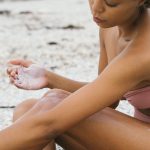Environmental Health Symposium (EHS) – Update
By Dr. Julie Neal
Why should we care about detoxification? Well, there are now 84,000 chemicals in our environment and 700 new chemicals are released every year. Most of these chemicals have not been tested for health safety. Scientific evidence is pointing to chemical exposures as a contributing factor to cancer, reproduction problems, early puberty, neurological and metabolic disruption in the body.
What are your most toxic everyday exposures? Here are some examples:
- Flame Retardants—found in nap mats, changing pads, couches, furniture, foam insulation, mattresses. Think newly remodeled house, new furniture, new baby!
- Perfluorinated Compounds – PFCs can be found in Scotchguard, Gore-Tex, Teflon, water and stain resistant fabrics, raincoats, microwave popcorn bags, pizza boxes, fast food packaging (one third of US children consume fast food daily!).
- Parabens—widely used as an antimicrobial preservative in personal care products, pharmaceuticals and foodstuffs. For most women, the breast is bathed continually in endocrine disrupter ingredients found in personal care products.
- Phthalates—ubiquitous toxicants found in vinyl flooring, shower curtains, rain coats, nail polish, fragrances, home air fresheners, new car smell. *Estimated that 75-100% of people are exposed to phthalates daily.
- BPA—present everywhere in the environment, mainly found in plastics. Human exposure to BPA is widespread with 93% of humans 6 years and older being affected (NHANES III).
- 1,4-dioxane—is an organic solvent commonly found in groundwater, drinking water and personal care products. Look for labels that say PEG, polysorbate, and ingredients that end in -laureth, -steareth, -ceteareth– and avoid those products.
- Toxicants in our water. Chemicals that are completely unregulated in the water supply include pharmaceuticals (SSRIs, anti-anxiety, beta blockers, antibiotics, hormones), titanium dioxide, pesticides, phthalates, BPA, artificial sweeteners, and 1-4 dioxane.
What can you do to prevent these toxic exposures and reduce your body’s toxic load?
Here is a quick list of action steps to better health:
- AVOIDANCE! (of toxins)
- Sauna—3-4x per week to sweat out many of these chemicals through the skin.
- Eat a cleansing diet, all organic foods, high in vegetables that include broccoli, cauliflower and other cruciferous veggies that help detoxify the liver.
- Avoid alcohol.
- Add flaxseeds to your diet to bind to toxicants and excrete through the bowels.
- Take supportive supplements, such as liposomal glutathione, magnesium glycinate, and probiotics. Ask us for more specific recommendations!
Source: “The Clinician’s Guide to Avoidance of Everyday Exposures.” EHS Conference April 2018. Anne Marie Fine, N.M.D.




